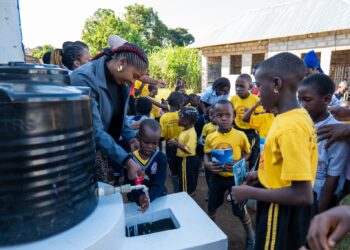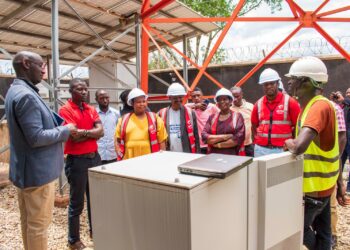By THE NEW YORK TIMES
Northern Gaza has no more functioning hospitals, the director general of the World Health Organization has said, describing scenes of horror witnessed by aid workers in the ruins of two partially destroyed medical facilities.
Aid workers who visited Al-Ahli and Al-Shifa hospitals on Wednesday during a rare humanitarian mission to deliver supplies “struggled to describe the immense impact recent attacks have had on these health facilities,” Dr. Tedros Adhanom Ghebreyesus, the W.H.O. chief, said in a statement posted to social media.
At Al-Ahli, the aid workers found rows of dead bodies lined up outside the hospital, while severely injured civilians writhed in pain on the floor and the pews of the chapel inside of it, he said.
In a video that Dr. Tedros posted to social media, a member of the medical mission stands inside the chapel, with injured people and crucifixes on the wall visible behind him.
“There are patients here who have been injured for more than a month and have had no surgery; there are patients who have been operated on and are now getting post-operative infections because the hospital doesn’t have sufficient antibiotics,” the aid worker in the video, Sean Casey, says.
“They are suffering enormously here,” he adds. “This is a completely unacceptable situation.”
The United Nations Office for the Coordination of Humanitarian Affairs took part in the mission, which it said was only the third humanitarian convoy to reach northern Gaza since a pause in fighting ended on Dec. 1 because of “the ongoing hostilities.”
A spokeswoman for the Israeli government did not immediately respond to a request for comment on the W.H.O.’s claims. Israel has accused Hamas of using hospitals as command and control centers, allegations that Hamas and medical staff have denied. The Israeli military says it has uncovered tunnels and weapons, including at Al-Shifa, the territory’s largest hospital complex, that it considers proof of its allegations.
Diplomats at the United Nations Security Council have been in intense negotiations this week over a resolution calling for a halt in fighting in the war in Gaza and a major increase aid deliveries. The United States has delayed the vote, according to diplomats, and has been the only member of the Security Council to block demands for an immediate and permanent cease-fire, vetoing two such resolutions.
Dr. Tedros said a cease-fire was necessary “to reinforce and restock remaining health facilities, deliver medical services needed by thousands of injured people and those needing other essential care, and, above all, to stop the bloodshed and death.”
Both hospitals visited by the team of aid workers on Wednesday are unable to provide much more than first aid — which means there are no working hospitals left in northern Gaza, he said. And only a few doctors and nurses remain at Al-Ahli to provide limited care to severely injured people in dire need of surgery and other complex procedures, he added.
Dr. Tedros said aid workers found a courtyard filled with bodies lined up in rows outside Al-Ahli because staff members were unable to leave the hospital to safely bury them. Aid workers also encountered 80 injured people, including older people and young children, sheltering in the hospital’s chapel and orthopedics department, he added.
“They included a 10-year old girl who lost her leg and had no family left to care for her, and an older man awaiting surgery for a gun wound to the chest he may never get, whose entire family had been killed,” said Dr. Tedros.
On Thursday, the U.N. Office for the Coordination of Humanitarian Affairs said that only nine of Gaza’s 36 hospitals were even “partially functional.”
All of those were located in southern Gaza, which has been flooded in recent weeks with hundreds of thousands of displaced people fleeing violence, and were operating at three time their normal capacity, the U.N. said in a statement.







Discussion about this post